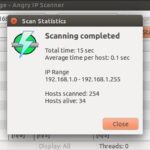Navigating the world of automotive diagnostics can be complex, especially when it comes to Japanese vehicles. Many car owners and even seasoned mechanics find themselves questioning which diagnostic tools are best suited for makes like Toyota, Honda, Nissan, Mazda, and others. The challenge is amplified when considering that Japanese cars sold outside of the US market may have different specifications compared to their US counterparts. This article aims to clarify the confusion and guide you in selecting the ideal Diagnostic Scanner For Japanese Cars.
Understanding the Diagnostic Dilemma with Japanese Imports
The automotive landscape is diverse, and vehicles manufactured for different regions often come with variations in their electronic control units (ECUs) and communication protocols. While OBD-II standards are largely universal, the nuances in implementation, especially in vehicles intended for markets outside North America, can affect the compatibility of diagnostic scanners.
You might find that a generic OBD-II scanner works for basic fault code reading and clearing on many Japanese cars. However, for in-depth diagnostics, accessing manufacturer-specific systems (like ABS, SRS, transmission, etc.), and performing advanced functions, a more specialized tool becomes necessary. This is where the question arises: which scanners truly offer comprehensive coverage for Japanese cars, particularly those not built to US specifications?
The Mention of Launch X431 and Exploring Alternatives
The original poster in our discussion mentioned the Launch X.431, a well-regarded diagnostic scanner known for its broad vehicle coverage and extensive functions. Indeed, Launch scanners, particularly the X431 series, have a strong reputation for working with a wide range of Asian vehicles. However, as highlighted, the cost of a Launch X431, especially with shipping and import duties, can be prohibitive.
This naturally leads to the search for more affordable yet equally capable alternatives. Brands like Autel are often considered, with their Maxisys line being touted as compatible with Asian vehicles. Yet, anecdotal evidence online presents a mixed bag, with some users reporting excellent compatibility and others encountering limitations.
Factors to Consider When Choosing a Scanner for Japanese Cars
To make an informed decision, consider these key factors when selecting a diagnostic scanner for Japanese cars:
-
Manufacturer-Specific Coverage: Ensure the scanner explicitly states compatibility with Japanese manufacturers (Toyota, Honda, Nissan, Mazda, Mitsubishi, Subaru, Suzuki, Daihatsu, etc.). Look for details on model and year coverage to confirm it includes the specific vehicles you intend to diagnose.
-
Functions and Capabilities: Beyond basic OBD-II functions, determine if the scanner supports:
- Full System Diagnostics: Access to engine, transmission, ABS, SRS, chassis, body control modules, and other systems.
- Bi-directional Control (Active Tests): The ability to send commands to vehicle systems to test components (e.g., activating solenoids, relays, or performing injector tests).
- Special Functions: Service resets (oil reset, EPB reset, SAS reset, etc.), key programming, ECU coding, and adaptation functionalities.
-
Software Updates and Support: A scanner is only as good as its software. Regular updates are crucial to maintain compatibility with newer models and access the latest diagnostic capabilities. Check the frequency and cost of software updates, as well as the availability of technical support.
-
User Reviews and Community Feedback: Research user reviews and forums specific to your region and the Japanese car models you work with. Real-world experiences can provide valuable insights into scanner performance and reliability in your specific context.
-
Budget and Long-Term Investment: While the Launch X431 is a powerful tool, explore options within your budget. Consider that a diagnostic scanner is a long-term investment, and prioritize a tool that offers the best balance of coverage, functionality, and value for your needs.
Navigating the “Buy-and-Try” Dilemma
The original poster’s concern about a “buy-and-try” scenario is valid. Purchasing a diagnostic scanner without certainty of its compatibility can be a risky investment. To mitigate this:
- Consult Vendor Compatibility Lists: Reputable scanner manufacturers and vendors often provide detailed compatibility lists on their websites. Scrutinize these lists to verify coverage for your specific Japanese car models and years.
- Seek Dealer or Importer Expertise: Contacting local dealers specializing in Japanese car imports or automotive tool suppliers in your region might yield valuable advice. They may have experience with scanners that are known to work well with the specific Japanese vehicles prevalent in your area.
- Explore Used Options with Caution: Considering a used Launch X431 or similar high-end scanner could be a cost-effective approach. However, exercise caution when purchasing used tools. Verify the scanner’s functionality, included connectors, and software update status. Ensure you are dealing with a trustworthy vendor to avoid discrepancies.
Conclusion: Informed Choice is Key
Choosing the right diagnostic scanner for Japanese cars requires careful research and consideration of your specific needs and budget. While premium options like the Launch X431 offer extensive capabilities, exploring reputable alternatives like Autel and conducting thorough due diligence can lead you to a suitable and cost-effective solution. Remember to prioritize manufacturer-specific coverage, essential diagnostic functions, and ongoing software support to ensure your investment serves you well in the long run. By taking an informed approach, you can confidently select a diagnostic scanner that empowers you to effectively maintain and repair your Japanese vehicles.

